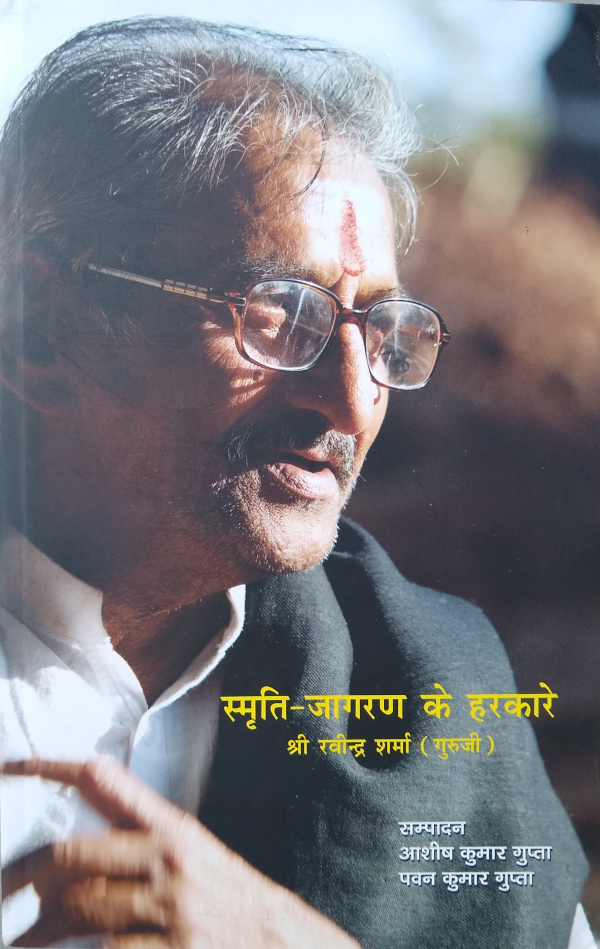About Ravindra Sharmaji and a small story from the video:
Ravindra Sharmaji (known as Guruji by everyone who knew him) was from Adilabad in Telangana, which was part of the Nizam’s Hyderabad and was not much affected by the British destruction machine. Guruji used to say that till the 1980’s the traditional systems that must have operated across India still operated there. Being inclined towards the arts and crafts, Guruji apprenticed himself with craftsmen and learnt many traditional crafts like making statues with clay and stone, pottery, metalwork etc. In this process he also developed a deep understanding of the jatis who have traditionally worked these crafts. What comes across from all the talks that Guruji gave was a picture of the completeness, the poornata, of our traditional society in all its sahajta and samarthya. It is not possible to extract meaningful ‘bullet points’ from the talk linked above but let me give you a single story (from 14:40 minutes) to start a discussion here and to entice you to listen to the full video. Guruji says…
The methodologies of teaching and learning were very diverse and interesting. There were no time constraints. No sitting in this or that way etc. There was a great singer from Adilabad called Narayan Rao. He went to Baroda to become a chela of Fayaz Khan Sahib. He was one of the crowd of chelas and stayed near the Guru for many months. The Guru, of course, was totally oblivious of most of his many chelas including Narayan Rao. And one day when the Guru was singing a new taan, Narayan Rao unthinkingly said, “Wah ustaad.” This was the only voice from the crowd of chelas sitting in front of the Guru. Khan sahib stopped in mid-song and imperiously asked, “Who said that? Who said wah ustad?” When Narayan Rao tentatively put his hand up, he was asked who he was. Narayan Rao told him he was also one of the chelas. “Oh, so you are one of my chelas,” said Fayaz Khan Sahib, “Why did you say wah ustad?” Narayan Rao timidly said that he thought that the new thing the Guru had done was great. Khan Saheb said, “Oh, you understood that it was a new thing. You can now go back and teach using my name.” Narayan Rao’s studies were officially over.
Some more about Ravindra Sharmaji:
This is what I wrote about Guruji in ‘Smriti Jaagran Ke Harkaare’ published by SIDH.

I met Guruji, Ravindra Sharma, for the first time at a Samvaad at SIDH. Set in the quietness and majesty of the Himalayas, the SIDH campus at Kempty was the ideal place to hear Guruji reminisce about his unique experience and worldview. This was around 2 years ago and some 20 people had come together for the samvaad. I had gone through every YouTube video and piece of information about Guruji on the internet and I was awed that I got a chance to be near him for seven days.
What I noticed was the gentleness and unhurriedness of word and action, the grace with which he moved through the spaces, the attention he paid to whoever was talking to him and the humor and sense of fun that was always visible just below the surface. Guruji used to say that our old architecture showed its poornata by not being needy for further decoration. Empty rooms in modern houses shout out to us to fill them with things. Whereas our old houses are poorna and are not needy of things. I like to think that Guruji radiated this type of poornata. In his unselfconsciousness and sense of ease he could be quietly sitting in a crowded room without drawing attention to himself in any way. And yet when he started to tell his stories, informally at the dining table or formally in a lecture hall, all of us listeners would be mesmerized.
Others would have said this before but it struck me that Guruji embodied the sahajta that he talked about. I wish that I had got more time to overcome my natural shyness and become part of his inner circle of students and well-wishers and friends. I wish that I had spent time at Kalashram and had sat and listened to Guruji’s gentle voice tell anecdotes and histories of the land of his experience that has now become a familiar and inspirational land of my dreams.
Links for further study:
Wikipedia page
Channel on YouTube